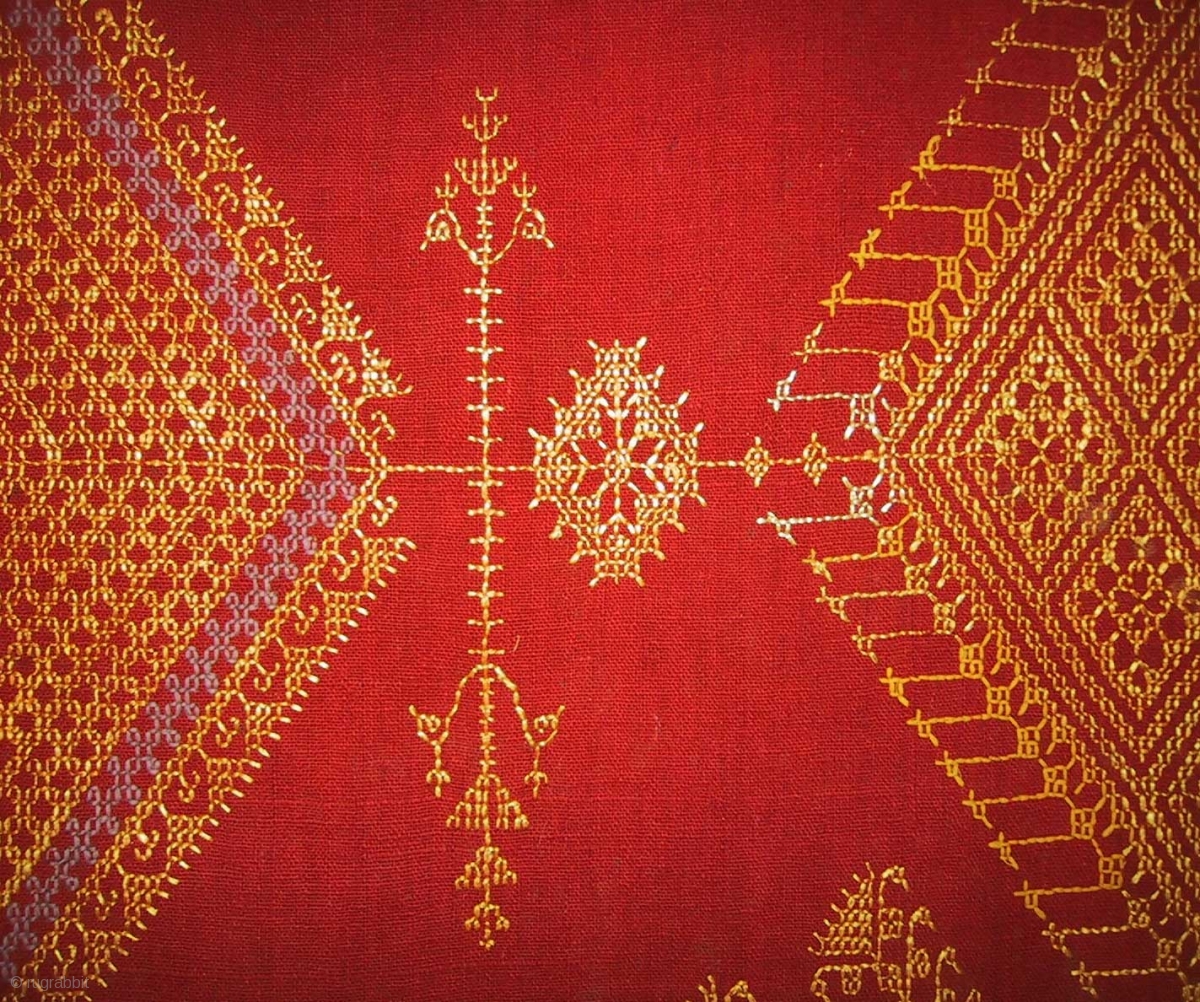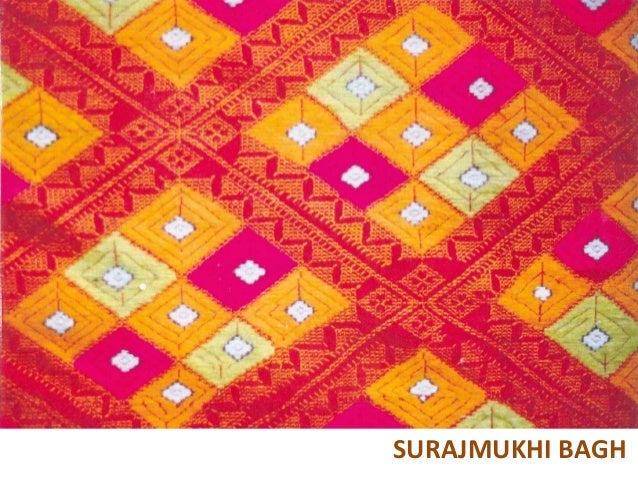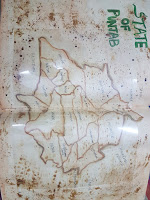Tuesday, 28 February 2017
Sunday, 19 February 2017
Socio-Culture of Phulkari
The culture of the people of Punjab is supposed to be one of the oldest and richest cultures of the world which has a very great history and complexity. The culture of the Punjabi's is widely spread throughout the country for the Punjabi's have settled across the globe. The culture of the Punjabi's shows its diversity and rich cultural heritage which includes different fields like Philosophy, poetry, spirituality, education, artistry, music, cuisine, science, technology, military warfare, architecture, traditions, values and history. The culture of the Punjabi's is known for their uniqueness and is very famous. There is a clannishness and high spirits which is exhibited in the lifestyle of the Punjabi people. People, Culture, Festivals of Punjab collectively form a vivacious base of enlightening social verve. While the people of Punjab are known for their strong determination, the culture of the state presents a multi-hued heritage of ancient civilizations.
Types of Phulkari
Phulkari can be found in different types. Let me now introduce to the world of phulkari.
C. Saloo: It was an ordinary plain red colored shawl of khaddar for daily use in the house, embroidered with motifs of animals, birds, jewelry or human figures.

E. Bawan Bagh: Bawan means fifty-two in Punjabi. In this kind of bagh, the base cloth was divided into fifty-two boxes with embroidery. Each of these boxes was embroidered with a different design made with bright colors. Professionals show their skill and patience with an embroidered Bawan Bagh. It shows the versatile talent and creativity of women

There are many types of phulkari depending upon the motifs, specific
characteristics, color of base fabrics and thread. The different types are described below:
A. Thirma: If the Phulkari was embroidered on a white
colored base cloth, it was called “Thirma”. It was a symbol of
purity. Older women and widows wore it. Bright colors were used on this type of
phulkari and the white base color looked like the outline of the pattern.


B. Chope and Suber: These were
wedding Phulkaris embroidered by the maternal grandmother (Nani) when her
granddaughter was born. They would be a gift for her wedding. The chope was
made to wrap the bride after her last bath before her marriage. The bride wore suber at a particular stage of marriage ceremony known as
“phera”. These were slightly larger than
other types of Phulkari. They were a symbol of love, care, passion and
happiness, were embroidered with red and orange color with bright golden yellow
colored thread. The Chope was also used to cover the bride’s dowry.
.
.

C. Saloo: It was an ordinary plain red colored shawl of khaddar for daily use in the house, embroidered with motifs of animals, birds, jewelry or human figures.
D. Vari-da-Bagh: This kind of Bagh was a gift to the bride by
the mother-in-law when she entered their house, her new home after her
marriage. It was always made on an orange and red colored khaddar with a single
golden and orange colored pat. Vari means the clothes and jewelry
presented to the bride by her groom’s family. This kind of Bagh was given to
the girl before marriage by her mother-in-law, the love showered on her by her groom’s
family

E. Bawan Bagh: Bawan means fifty-two in Punjabi. In this kind of bagh, the base cloth was divided into fifty-two boxes with embroidery. Each of these boxes was embroidered with a different design made with bright colors. Professionals show their skill and patience with an embroidered Bawan Bagh. It shows the versatile talent and creativity of women

F. Darshan Dwar or Darwaza:
Darashan Dwar literally means ‘a gate from where one can see the
god’. A person embroidered this kind of
Bagh for presenting oneself at a religious place to thank god after a wish has
been fulfilled. It was always embroidered on a red colored base cloth.
Human figures, plants, animals, birds and flower motifs were commonly used for
this Phulkari


G. Sainchi phulkari: Sainchi
literally means ‘figuring a design’. In this Phulkari, motifs were represented
from the rural life of Punjab with embroidery. Sainchi was the specialty of the
Malwa religion and of the Bhatinda and Faridkot districts of Punjab. It
was the only Phulkari in which designs were traced with black ink before
starting the embroidery. Human figures, animals and birds were used as
motifs for the Sainchi Phulkari


H. Til Patra: Til Patra literally
means ‘a sprinkling of sesame seeds’. This kind of embroidery was done with
small dots on an overall field. These were embroidered for everyday use and
presented to domestic servants and laborers as a gift at a marriage or other
auspicious occasions.
I. Nilak: The Nilak Phulkari was made with a black
and navy blue base cloth of khaddar, and yellow and crimson-red silk thread,
with attractive floral patterns. This type of Phulkari was also embroidered for
daily use.
J. Shishedar Phulkari: As the name implies, pieces of mirror pieces
of mirror were stitched onto the Phulkari. It was done in a red or a chocolate
brown background. It was made primarily in the southeast parts of Punjab, now
in the state of Haryana (Hitkari 1980).
K. Suraj Mukhi: Suraj Mukhi means ‘Sun Flower’. In this
Phulkari, the field was embroidered with large sized boxes that were divided
into nine small parts embroidered with different colors. In the centre of every
small box, another small box was embroidered with a white thread and a black or
red colored outline. It looked like a geometrical pattern.


Motifs of Phulakri
Now let take you through the motifs of phulkari.
The women of
rural Punjab used motifs from their household articles and their natural
surroundings. On the Phulkari and Bagh, women depicted these articles and used
the “darning stitch” for complicated designs. The women also created designs from their own
imagination, feelings and emotions as well as inspiration from nature.
A. The geometric motifs: For making Bagh, geometrical motifs were used
such as triangles, squares and vertical and horizontal lines with changing
directions and the darn stitch with various color combinations. The subject
matter of Phulkari comprised of flowers, animals and human forms and many other
things made with geometrical patterns as shown in fig. 1.
B The vegetables, fruits and
floral motifs: Nature provides many
motifs for creating art. As the name Phulkari suggests ‘growing flower’, many
floral motifs were created by women from their own imagination as shown in fig.
2. Genda (marigold), Surajmukhi (sun flower), Motia (jasmine) and Kol (lotus
flower) were commonly used for Phulkari and Bagh. Sometimes, the field of phulkari was
embroidered with small patterns called “Butian”. Among the different fruits,
santaran (orange), anar (pomegranate), nakh (pear), bhut (muskmelon), mango
slice, and chhuare (dried dates) were used
as motifs for a Phulkari. Among the vegetables, women used replicas of
karela (bitter guard), gobhi (cauliflower), mirchi (Chili) and dhaniya
(coriander)
C. The birds and animal motifs:
Bird and animal motifs were also on Phulkari. In a “sainchi phulkari”,
human forms, animals and birds were used. The most common
animal motifs are the cow, buffalo, goat, camel, horse, elephant, snake, fish,
tortoise, pig, rabbit, frog, cat, rat, donkey, squirrel and lion. Among the
bird motifs, the peacock, parrot, sparrow, crow, owl, hen, and pigeon were the
most popular
D. The household articles:
Articles from the kitchen were also used as motifs. These included the
velana (rolling pin), gadava (brass urn) half filled with water, and ghara
(pitcher) etc.
E. Jewelry motifs: Women of Punjab often used jewelry articles
as motifs for embroidering Phulkari as shown in fig. 4. They used items like
the necklace, Kangan, Karanphool and Jhumka, different types of earrings,
guluband different types of bracelets, nose rings, Tikka, Shingar Patti,
Phools, and Rani Har with a pendant. All these articles were embroidered in a
yellow colored thread to show they were made of gold.
F. Miscellaneous articles: Other Phulkari motifs were taken from rural
life, - For example, Shalimar, Charbagh and Chaurasia Bagh depict the Mughals
and other gardens. Bagh that was embroidered with a red and yellow colored
flower was called Asharfi (mohur or gold coin) Bagh. “Ike” (ace of diamond design)
came from playing cards. There were Dhoop Chhaon (sun light and shade), Lahriya
(waves), Patedar (stripes), Chand (moon), Patang (kite), Saru (cypress tree),
Pachranga (five coloured), Satranga (seven coloured), Dariya (river) and Shisha
(mirror) patterns as well.
Tools and Techniques of Phulkari
Let me now tell you about the tools and technique of phulkari. Punjabi women made
the traditional Phulkari of Punjab after completing their household work. They
sat together in a group called “Trijan” where all women engaged in embroidery,
as well as in dancing, laughing, gossiping and weaving. Traditional Phulkari
was made of hand-dyed and hand-woven spun cloth called “khaddar” using high
quality untwisted silk thread called “pat” with bright colors like red, green,
golden, yellow, pink and blue. It was done with an ordinary needle in the darn
stitch, without the help of any tracing, drawing, pattern or design. For
embroidering a single Phulkari, an average of 50 to 100 gram of ‘Pat’ is needed
and for Bagh 100 grams, to 150 grams are required. The silk thread came from
Kashmir, Afghanistan and Bengal and dyed in Amritsar and Jammu. The best quality
of silk thread came from China. Handling this kind of thread needed more
expertise and experience. The cloth Khaddar could be of four colors
white, red, black and blue. White was used by the mature women and widows,
while red was for young married women. Black and blue colors were for daily use
by women. A Phulkari takes anywhere from a month to a year to complete, and the
special types of “Vari Da Bagh” took a year. The time it takes to make a
Phulkari also depends upon the design, pattern, and the expertise of the
embroiderer. For example, a “vari da bagh”, where the embroidery covers
the entire surface of the cloth and the base is not visible, takes ten years to
complete. It has a complicated design of golden colored silk thread. The
Bagh and Phulkari are embroidered on an undyed fabric called a “Thirma” . The women of the eastern Punjab embroidered Phulkaris with patterns of
human, animal, and plant forms, as well as other jewelry patterns. With this
type of Phulkari, women trace the outline of the design with black ink, and
then fill them with the darning stitch. The satin stitch, herringbone
stitch, cross stitch, chain stitch, blanket stitch, backstitch, stem stitch,
and running stitch were also used in phulkari embroidery.
Subscribe to:
Comments (Atom)



















